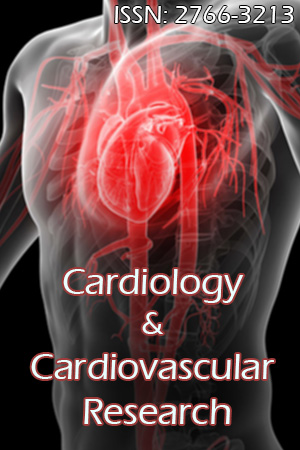Venous Thromboembolic Disease (VTD) of the Limbs: Epidemiological, Diagnostic and Therapeutic Aspects at the Internal Medicine and Cardiology Department of the Amirou Boubacar Diallo National Hospital (HNABD) of Niamey: About 165 Cases
Dodo Boubacar, Issoufou Garba, Saley Hammadou, Idrissa Hama, Maliki Abdoulaye Moctar, Dari Mossi Mahamadou, Bonkano Ali, Souley Kimba, Harouna Habibou, Arab Rakia, Brah Souleymane, Touré Ibrahim Ali.
Introduction: Deep vein thrombosis (DVT) of the lower limbs and pulmonary embolism (PE) are two clinical expressions of the same disease, venous thromboembolism (VTE). DVT and PE share the same risk factors and curative anticoagulant treatment. The aim of our study is to contribute to the knowledge of venous thromboembolic disease (VTE) in its epidemiological, diagnostic and therapeutic aspects in the cardiology department of the Amirou Boubacar Diallo National Hospital in Niamey.
Methodology: This was a retrospective and descriptive study from 01 January 2016 to 31 December 2021 in its first phase, prospective and descriptive from 01 January 2022 to 30 June 2022 in its second phase i.e. 78 months. Our study included patients hospitalized with imaging- confirmed VTE.
Results: One hundred and sixty-five (165) cases of venous thromboembolic diseases were retained over this study period out of all hospitalized patients, which was 4885 patients, i.e. a hospital frequency of 3.37%, the female sex was predominant, i.e. 55% (90 cases) of the sample with a sex ratio of 0.88. The mean age of our patients was 54.07 ± 16.25 years with extremes of 22 and 83 years. The 55.0 - 64.0 age group was the most represented. Risk factors for VTE were dominated by prolonged bed rest with 23.6% of cases, followed by obesity with 14.5% of cases. Dyspnea was the clinical leader with 79.49% of cases in pulmonary embolism (PE) and leg pain in 76.4% of cases in deep vein thrombosis (DVT). One hundred and thirty-two (132) patients had deep vein thrombosis (DVT), of which 108 had proximal DVT (81.81%) and 24 had distal DVT (18.19%). On CT angiography, of the 39 cases of pulmonary embolism (PE), localized obstruction on the right was predominant with 46.15%; it involved the left pulmonary artery in 23.07% of cases. Right axial deviation was the majority electrical abnormality accounting for 36.35% of cases, followed by right ventricular hypertrophy with 27.27% of cases. Pulmonary arterial hypertension, right cavitary dilation and right intra-cavitary thrombi and were the most frequent ultrasound abnormalities, with 12.72% respectively; 9.1% and 9.1% of cases. The death rate was 10.9% of cases.’
Conclusion: Venous thromboembolic disease is a common reason for hospitalization. It can be serious with an often guarded prognosis, hence the need for rigorous management and prevention in patients at risk.
View pdf
